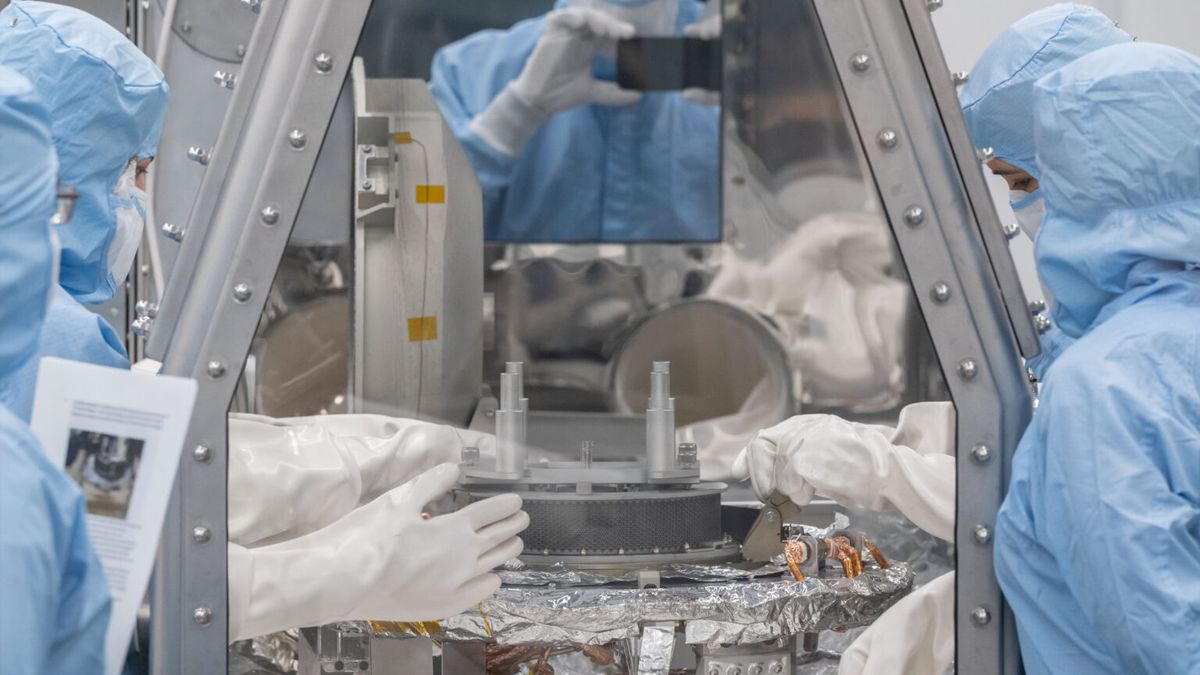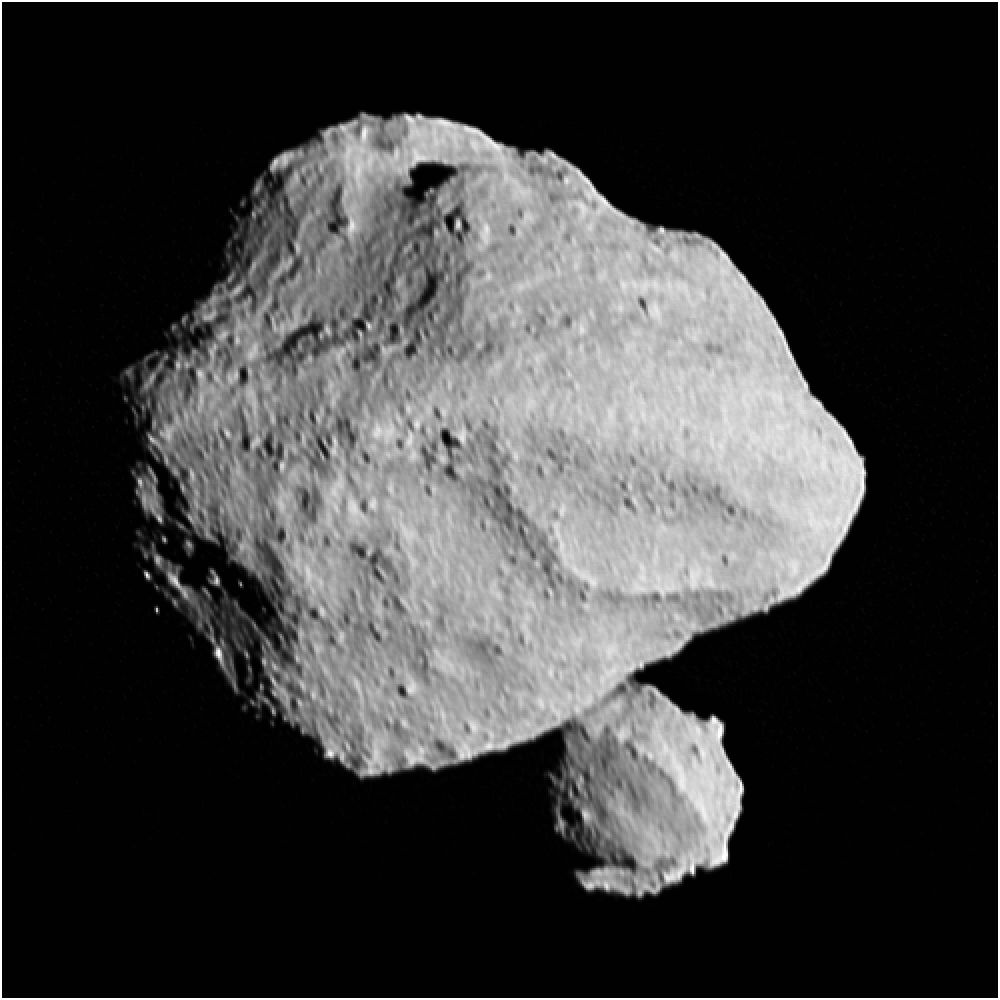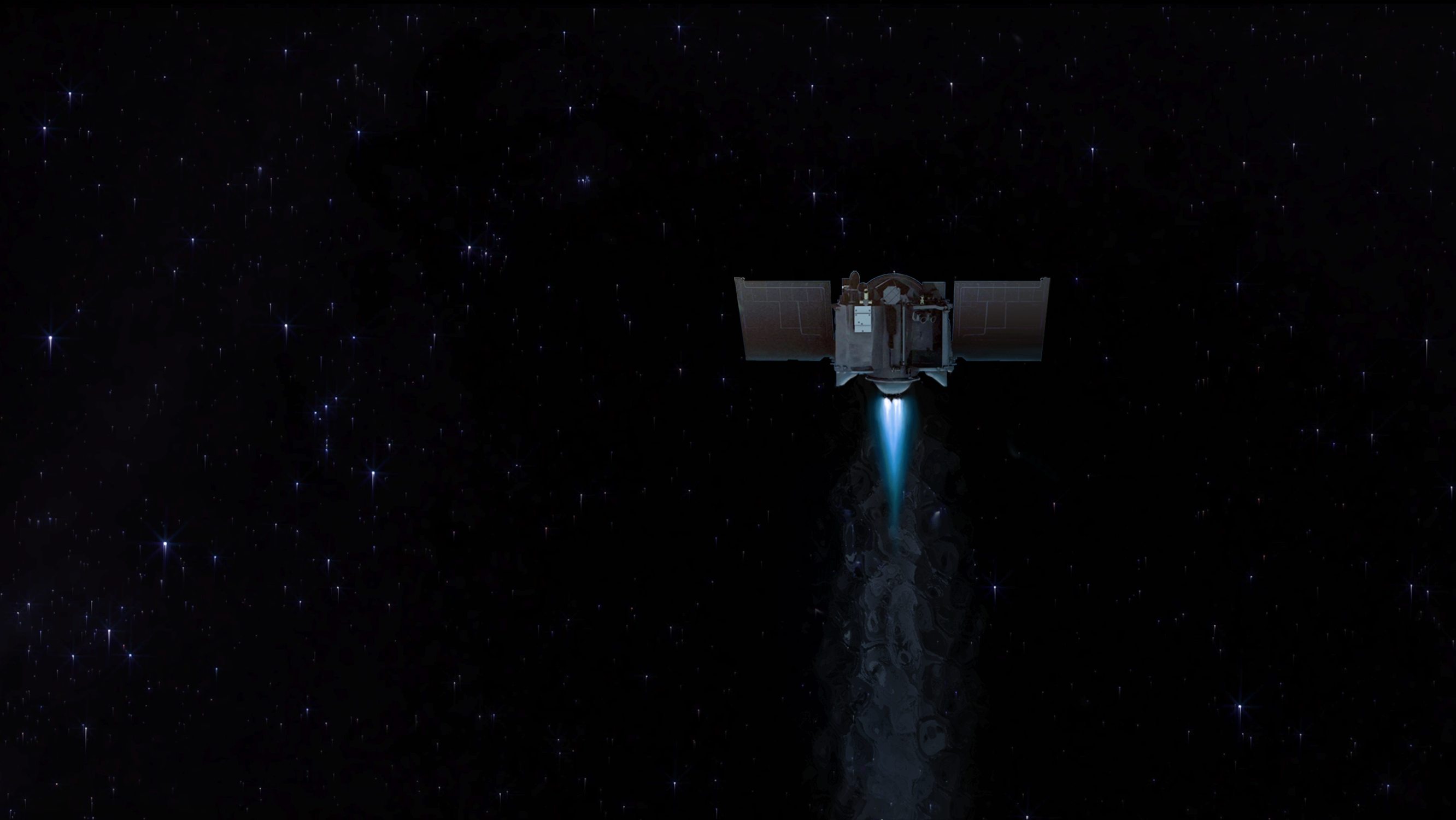- Joined
- 21 January 2015
- Messages
- 12,147
- Reaction score
- 16,347
Since the capsule has been delivered the mission is now called OSIRIS-APEX as it travels to Apophis.
NASA's OSIRIS REx spacecraft completed its primary mission by returning a large sample from the asteroid Bennu to Earth over the weekend, dropping its sample return capsule neatly onto a test range in Utah after giving the engineers some concern that it might crash.
Now the material has been recovered it'll be sent to labs to be analyzed using technologies and instrumentation which could never fly on a spacecraft.Meanwhile the parent spacecraft is renamed OSIRIS APEX and is headed toward a rendezvous with Apophis.
Hello and welcome! My name is Anton and in this video, we will talk about a brief history of sample return missions
Links:
0:00 Osiris rex capsule retrieval
1:20 Samples are here, but we don't know much yet
2:00 Perfect landing
2:40 First mission - Stardust
3:15 Major discoveries from comet Wild 2
4:05 JAXA launches a mission to an asteroid
5:00 Major findings from a strange asteroid
6:05 Genesis mission and its unusual landing
6:35 Ryugu retrieval and incredible success by Japan...again
7:30 Strange discoveries
9:15 Weird bubbly surface on Bennu
10:00 Water?! and strange liquids inside crystals
11:30 Bennu samples are more exciting
I just saw the hi-res shot of the OSIRIS REx sample container after opening, and I’m amazed at how much dust we see. When the TAGSAM system was developed the regolith simlulants weren’t anywhere close to this fine. But also, no trace of the larger pieces visible in space.
NASA finally opened the space capsule containing the largest asteroid sample ever collected by a space mission. The sample came from Bennu, a potentially hazardous asteroid that's like a time capsule from the early solar system. On 26 September 2023, scientists at NASA's Johnson Space Center in Houston opened the lid on the sample return canister from the OSIRIS-REx mission, which had returned to Earth two days earlier with a sample from the asteroid. As the lid was lifted, scientists gasped at what they saw: a layer of black dust and debris on the avionics deck of the canister. Also, the sample weighed 100 grams more than what was collected at Bennu. This was unexpected, as the sample was safely stored in a sealed container all along the way.
So, how did this happen in the first place? What's the source of the unexpected black dust on the avionics deck of the canister? Finally, and most importantly, what do scientists expect to find in the detailed analysis of the largest asteroid sample that has ever returned to Earth?
The 74th episode of the Sunday Discovery Series answers all these questions in detail.


NASA's first asteroid-return sample is a goldmine of life-sustaining materials
The samples hold chemical clues to the formation of our solar system—and the origin of life-supporting stuff on our planet.www.popsci.com
It’s been over 7 years since NASA launched a spacecraft intended to retrieve samples from an Asteroid. A few weeks ago the sample successfully landed in the Utah desert and was just partially opened by NASA scientists. Inside is the largest asteroid sample ever returned to Earth. Initial scientific returns are promising, showing that Bennu is rich in both water and carbon-containing compounds.
When NASA picked Asteroid Bennu, they were hoping that it would contain these exact features. Interestingly, when the spacecraft first made contact, it actually grabbed more rocks and dust than expected. Now NASA is able to figure out exactly how much was extracted and the quality of the sample.
Even though the capsule landed a few weeks ago, NASA is taking its time and doing everything in its power to ensure the samples are not contaminated. This way they can be sure that whatever features and compounds shown are from the asteroid and not Earth. Here I will go more in-depth into the initial results, why they are so important, plans for the future, and more.
Full article here - https://thespacebucket.com/what-exact...
…According to a NASA blog post, the curation team that's been processing the samples says it has removed and collected 70.3 grams (2.48 ounces) of Bennu material from the capsule so far — and it hasn't even actually been opened yet. Those 70.3 grams come from just the area on the outside (and part of the inside) of the sample collector's head.
"After multiple attempts at removal, the team discovered two of the 35 fasteners on the TAGSAM head could not be removed with the current tools approved for use in the OSIRIS-REx glovebox," it says. "The team has been working to develop and implement new approaches to extract the material inside the head, while continuing to keep the sample safe and pristine."
Basically, the OSIRIS-REx scientists have many regulations in place for how to deal with the sample because it's very important they don't interfere with its preservation. For instance, the blog post says, all curation work is performed inside a special glove box that has a constant flow of nitrogen. Without that flow, the sample might be exposed to Earth's atmosphere.

Hello Lucy! The spacecraft phoned home and is healthy. Now, the engineers will command Lucy to send science data from the Dinkinesh encounter to Earth. This data downlink will take several days. Thanks for following along today and stay tuned!
go.nasa.gov/3sgxWj7

The satellite discovered during the first asteroid encounter of NASA’s Lucy mission has an official name. On Nov. 27, 2023, the International Astronomical Union approved the name “Selam” or ሰላም, which means “peace” in the Ethiopian language Amharic, for Dinkinesh’s moon.

This animation depicts the orbital trajectory of asteroid 99942 Apophis as it zooms safely past Earth on April 13, 2029. Earth’s gravity will slightly deflect the trajectory as the 1,100-foot-wide (340-meter-wide) near-Earth object comes within 20,000 miles (32,000 kilometers) of our planet’s surface. The motion has been sped up 2,000 times.
Credit: NASA/JPL-Caltech
They found objects in the Bennu Sample that are clearly pieces of 1 initial thing (what do you call these tiny bits of asteroid?) This is the ultimate puzzle!


- Early analysis of the asteroid Bennu sample returned by NASA’s OSIRIS-REx mission has revealed dust rich in carbon, nitrogen, and organic compounds, all of which are essential components for life as we know it. Dominated by clay minerals, particularly serpentine, the sample mirrors the type of rock found at mid-ocean ridges on Earth.
- The magnesium-sodium phosphate found in the sample hints that the asteroid could have splintered off from an ancient, small, primitive ocean world. The phosphate was a surprise to the team because the mineral had not been detected by the OSIRIS-REx spacecraft while at Bennu.
- While a similar phosphate was found in the asteroid Ryugu sample delivered by JAXA’s (Japan Aerospace Exploration Agency) Hayabusa2 mission in 2020, the magnesium-sodium phosphate detected in the Bennu sample stands out for its purity (that is, the lack of other materials included in the mineral) and the size of its grains, unprecedented in any meteorite sample.

NASA’s Lucy mission is heading to the Jupiter Trojans, two swarms of asteroids trapped in Jupiter’s orbit…but to get there, Lucy needs a little help from the Earth.
On December 12, 2024, the spacecraft will make its second close flyby of Earth (following an earlier gravity assist in October 2022). As night falls on Hawaii, Lucy will streak over the darkened Pacific Ocean, coming to within about 220 miles of the planet at 11:15 pm ET.
The encounter will boost Lucy’s velocity by four-and-a-half miles per second relative to the Sun, putting it on course for the L4 Trojans that travel ahead of Jupiter.
NASA’s OSIRIS-APEX (Origins, Spectral Interpretation, Resource Identification and Security – Apophis Explorer) spacecraft kept its cool again this past fall after passing within 46.5 million miles of the Sun, between the orbits of Mercury and Venus, and surpassing its designed heat tolerances.
On Jan. 23 the mission team completed its review of all the data recorded by the spacecraft and its instruments during the solar pass. “There were no surprises, and the spacecraft is operating well,” said Mike Moreau, OSIRIS-APEX deputy project manager at NASA’s Goddard Space Flight Center in Greenbelt, Maryland.
As planned, on Sept. 2, 2024, OSIRIS-APEX passed through perihelion — the phase of its orbit closest to the Sun. The trajectory to Apophis takes the spacecraft much closer to the Sun than it was originally designed for. Between Aug. 1 and Oct. 13, the spacecraft was configured in a special orientation that uses one of the solar arrays to shade the most heat-sensitive components, keeping them within safe operating temperatures.
While in perihelion configuration, communication with the spacecraft is only possible through one of the spacecraft’s low-gain antennas, thus only very limited data is available to monitor its systems. During this most recent perihelion, there was also a period of several days when no communications were possible while the spacecraft was on the other side of the Sun from Earth.
On Oct. 13 the spacecraft exited the perihelion configuration and methodically returned to full operating status, allowing flight engineers to downlink and analyze spacecraft telemetry and assess the health of the system. In November 2024, the spacecraft executed routine checkouts of instrumentation on the spacecraft. OSIRIS-APEX appears to be healthy after the second of six close perihelion passages on its six-year journey to rendezvous with asteroid Apophis.
OSIRIS-APEX successfully passed through its first perihelion earlier in 2024. To reach asteroid Apophis in 2029, the spacecraft must survive four more close encounters with the Sun, the next of which will occur in May 2025.

In its second asteroid encounter, NASA’s Lucy spacecraft obtained a close look at a uniquely shaped fragment of an asteroid that formed about 150 million years ago. The spacecraft has begun returning images that were collected as it flew approximately 600 miles (960 km) from the asteroid Donaldjohanson on April 20, 2025.
The asteroid was previously observed to have large brightness variations over a 10-day period, so some of Lucy team members’ expectations were confirmed when the first images showed what appeared to be an elongated contact binary (an object formed when two smaller bodies collide). However, the team was surprised by the odd shape of the narrow neck connecting the two lobes, which looks like two nested ice cream cones.
“Asteroid Donaldjohanson has strikingly complicated geology,” says Hal Levison, principal investigator for Lucy at Southwest Research Institute, Boulder, Colorado. “As we study the complex structures in detail, they will reveal important information about the building blocks and collisional processes that formed the planets in our Solar System.”
From a preliminary analysis of the first available images collected by the spacecraft's L’LORRI imager, the asteroid appears to be larger than originally estimated, about 5 miles (8 km) long and 2 miles (3.5 km) wide at the widest point. In this first set of high-resolution images returned from the spacecraft, the full asteroid is not visible as the asteroid is larger than the imager’s field of view. It will take up to a week for the team to downlink the remainder of the encounter data from the spacecraft; this dataset will give a more complete picture of the asteroid’s overall shape.
Like Lucy’s first asteroid flyby target, Dinkinesh, Donaldjohanson is not a primary science target of the Lucy mission. As planned, the Dinkinesh flyby was a system’s test for the mission, while this encounter was a full dress rehearsal, in which the team conducted a series of dense observations to maximize data collection. Data collected by Lucy’s other scientific instruments, the L’Ralph color imager and infrared spectrometer and the L’TES thermal infrared spectrometer, will be retrieved and analyzed over the next few weeks.
The Lucy spacecraft will spend most of the remainder of 2025 travelling through the main asteroid belt. Lucy will encounter the mission’s first main target, the Jupiter Trojan asteroid Eurybates, in August 2027.
“These early images of Donaldjohanson are again showing the tremendous capabilities of the Lucy spacecraft as an engine of discovery,” said Tom Statler, program scientist for the Lucy mission at NASA Headquarters in Washington. “The potential to really open a new window into the history of our solar system when Lucy gets to the Trojan asteroids is immense.”
